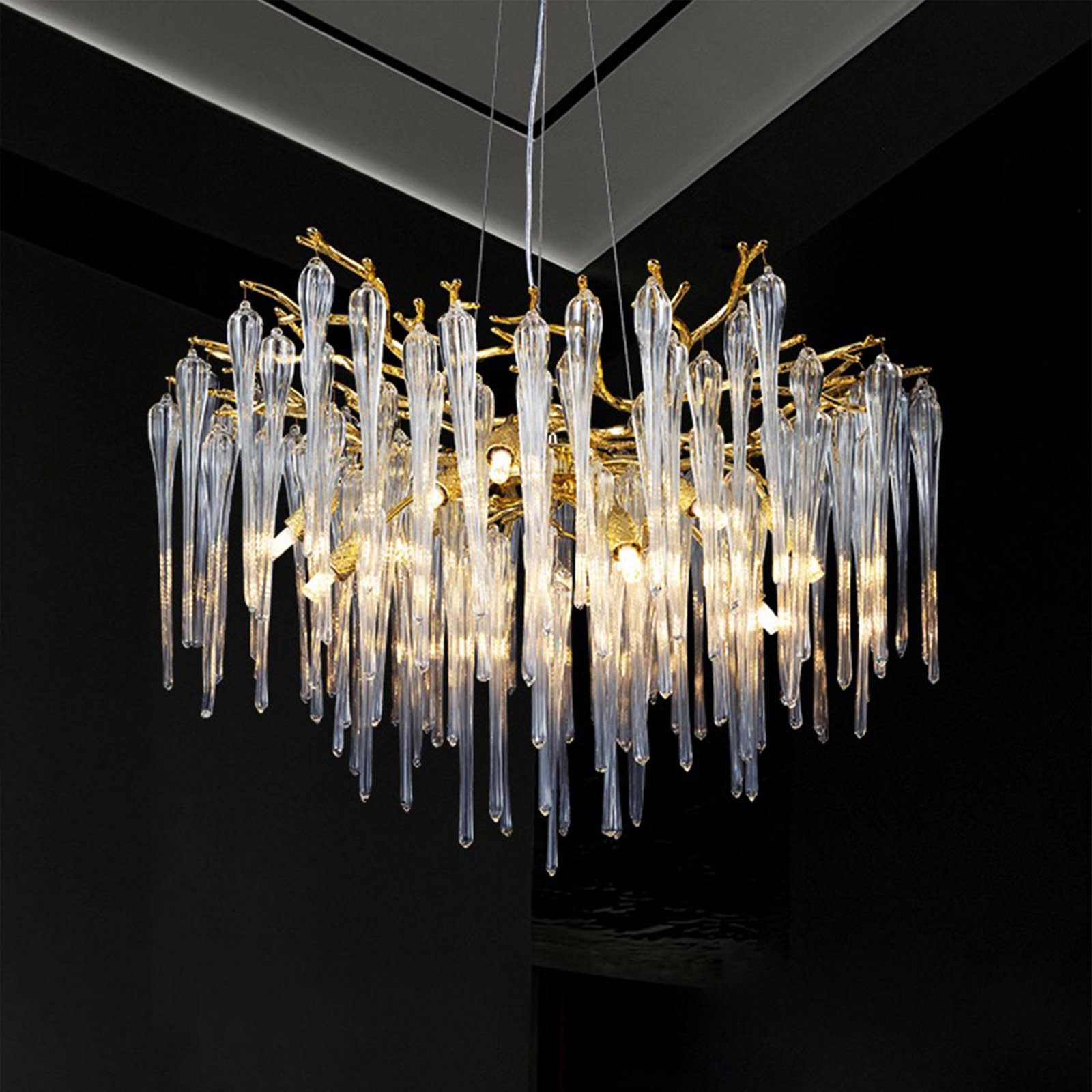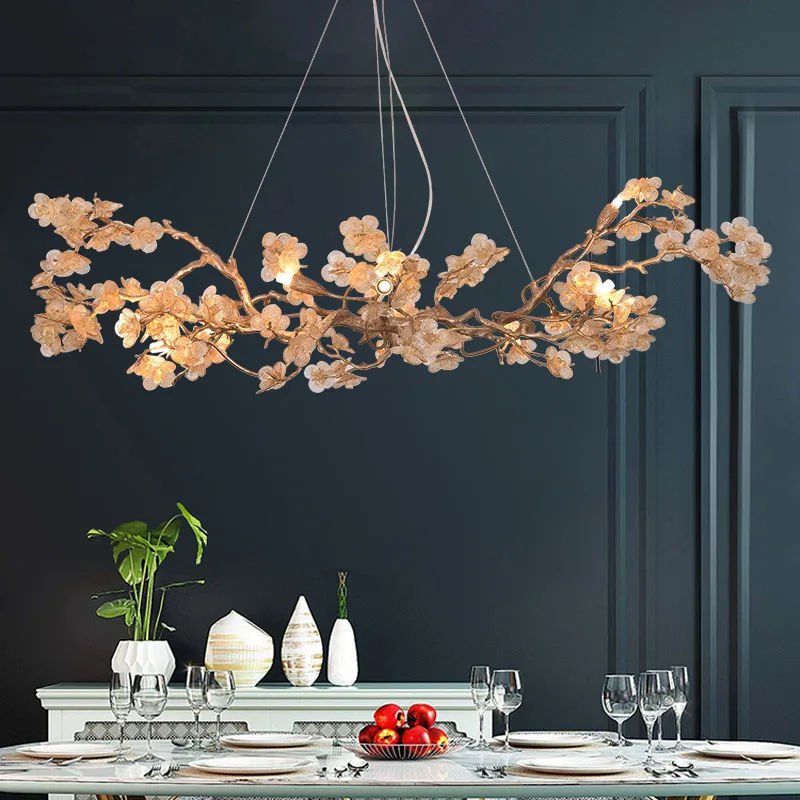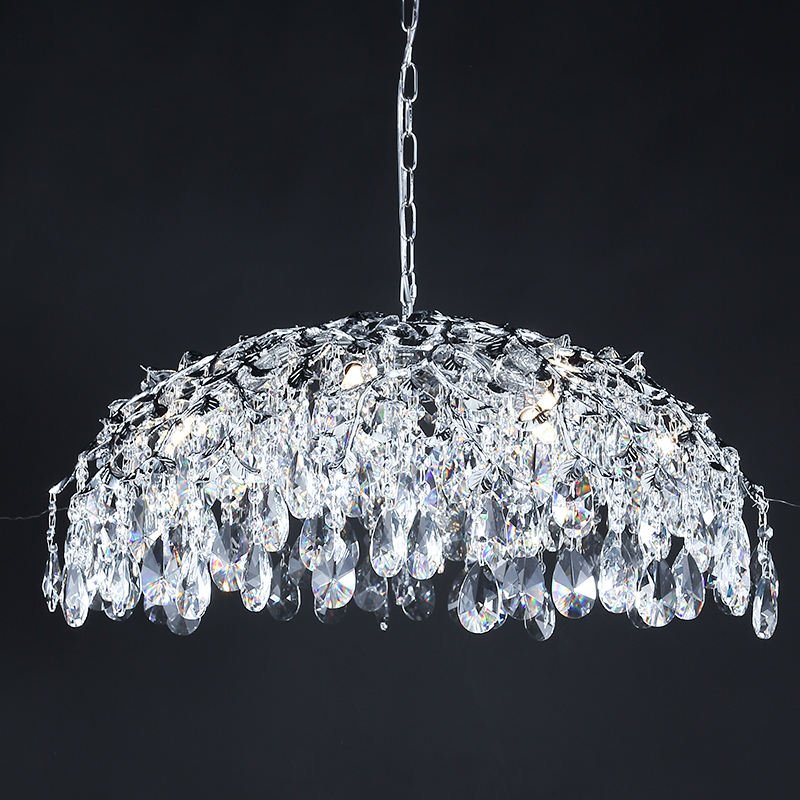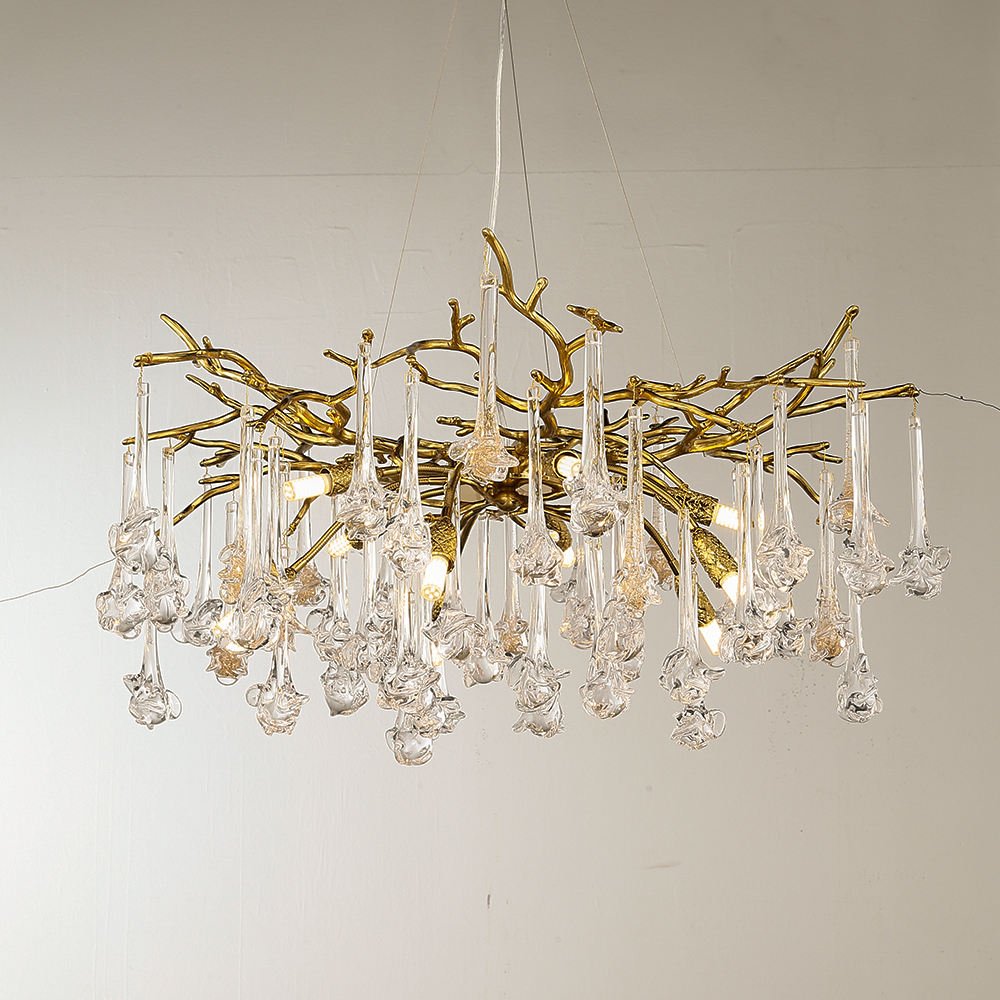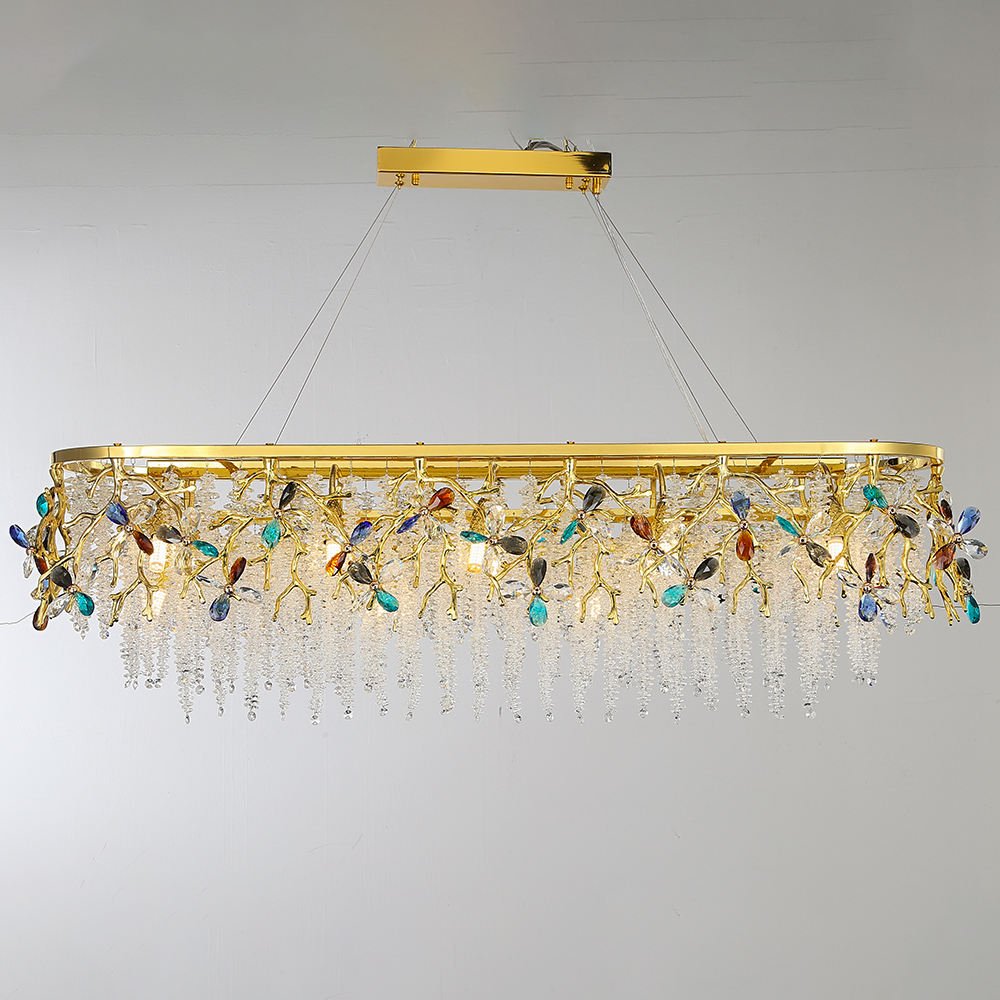Key Takeaways
- • Unique Style: Black branch chandeliers offer a striking mix of modern design and natural forms, makin’ them stand out.
- • Versatile: They fit surprisingly well in lots of different rooms and decor styles, from minimalist to kinda fancy.
- • Size Matters: Getting the right size chandelier for your room’s height and width is super important so it dont look weird.
- • Material Choices: Usually made of metal, they can come plain or with extras like crystals or glass bits.
- • Light Control: Using dimmers and pickin’ the right bulbs (like warm LEDs) really changes the vibe.
- • Installation: Can be tricky due to size and shape; sometimes its best to get a pro.
- • Coordination: Works well with various furniture finishes but don’t overdo the ‘branch’ theme everywhere.
- • Maintenance: Regular dusting is key, especially for more complex designs.
Why Pick a Black Branch Chandelier Anyway?
So, whats the big deal with these black branch chandeliers? Why’s everyone seemin’ to want one for their modern house? Well, first off, they just look cool. It’s like bringing a bit of the outside indoors, but makin’ it sleek and kinda dramatic with that black finish. It’s not like your grandma’s fussy crystal chandelier, nor is it some boring flush mount light. It hits that sweet spot – interesting to look at, but still really classy. The black colour itself is pretty powerful in design. It goes with almost anything, seriously. Got bright colours? The black chandelier grounds them. Got a neutral room? It adds a punch, a focal point. It dont clash easy. I remember this one client, they had this room with everything beige and grey, nice stuff, but a bit… sleepy. We hung a black branch chandelier, quite a sparse design, and boom – the room suddenly had personality. Didn’t need much else.
The branch design itself adds somethin’ organic. Modern design can sometimes feel a bit cold or boxy, you know? Straight lines, hard edges. A branch chandelier breaks that up. It has curves, asymmetry, like a real tree branch. This makes a space feel a little softer, more natural, even with the modern black color. And they aint all the same, neither. Some are really twiggy and delicate, others are thick and bold. You might find one that looks almost like coral, or another like winter branches. This variety means you can find one that really clicks with your specific taste. It’s not just a light fixture; its more like a sculpture that lights up. Compared to, say, a Golden Branch Chandelier with Crystal Icicle Pendants, the black offers a different mood – less bling, more moodiness and contrast. It’s a statement, for sure, but one that often feels more sophisticated than shouty. Its a choice that says you appreciate design but don’t need to be flashy about it.
Gettin’ the Size Right: Chandeliers Aren’t One-Size-Fits-All
Okay, listen up, ’cause this is important. You find the most beautiful black branch chandelier, you love it, you buy it… and it looks tiny and lost in your big living room. Or, maybe worse, you hang this massive thing in a small dining nook and everyone keeps bangin’ their head. Size and scale are everything with statement lighting like this. Get it wrong, and the whole room feels off. People mess this up all the time, trust me. The most common mistake? Goin’ too small. We’re often a bit timid with lighting sizes. A chandelier should have presence! A good rule of thumb for room width and length: add the dimensions in feet together, and that number (in inches) is a decent starting diameter for your chandelier. So, a 12ft x 15ft room? 12 + 15 = 27. Look for somethin’ around 27 inches wide. It’s a starting point, not a strict rule, mind.
Ceiling height is the other biggie. Standard 8-foot ceilings? You need a fixture that doesn’t hang too low, especially in walkways. Aim for at least 7 feet of clearance underneath. Higher ceilings give you way more freedom to choose something dramatic and long. For dining tables, the rules change slightly. You want the chandelier centered over the table, hangin’ about 30-36 inches above the tabletop. This lights the table nicely without blockin’ views across it. And the width? Make it about 1/2 to 3/4 the width of your table, so it looks balanced. Don’t forget the ‘visual weight’ too. A very dense, complex black branch design might feel bigger than a sparse, airy one, even if they have the same dimensions. Consider the Luxe Crystal Umbrella Branch Chandelier, its quite full, so it would need a decent space to not feel overwhelming, even if its diameter isn’t huge. Measure your room, think about where you’ll hang it, and then fall in love with a specific chandelier.
Where to Hang It? Ideas for Your Rooms
So you’ve got your eye on a black branch chandelier, maybe even figured out the size. Now, where does it actually go? The cool thing ’bout these fixtures is their versatility. They aren’t just for grand dining rooms anymore, though they look fantastic there. Let’s think room by room. The living room’s a classic spot. Usually centered in the room, or maybe over the main seating area’s coffee table. It becomes the main ‘wow’ factor. Make sure it hangs high enough so tall folks don’t feel like ducking! A black branch chandelier here can tie together metal accents from other furniture or decor. It just adds that touch of drama.
Dining room is probably the most popular place. Hanging over the table, like we talked about with sizing. Here, it creates ambiance for meals, draws people together. Put it on a dimmer switch – essential! Bright for homework or tasks, low and moody for dinner parties. It totally changes the feel. I once installed one in a dining room with a really rustic wooden table, and the contrast between the rough wood and the sleek black branches was just chef’s kiss. Perfect tension. Then there’s the bedroom. Maybe not the first place you think of, but why not? A slightly smaller, more delicate black branch design can be incredibly romantic, like moonlight through trees. Hang it centered, or if you have a seating nook, maybe there. Avoid hanging it directly over the bed where you might stare straight up into bulbs though. And the entryway or foyer! Talk about first impressions. A striking black branch chandelier here says ‘this home has style’ right from the door. Just ensure its scaled right for the space – don’t want it to feel cramped. Even styles like a Gilded Branch Chandelier with Colorful Crystal Droplets, while not black, show how branch styles can adapt to different rooms depending on finish and accents.
More Than Just Black: What Are These Things Made Of?
Alright, so it’s black, it’s branchy. But what’s it actually made of? The main structure, the branches themselves, are almost always metal. Common choices are iron, steel, or aluminum. Iron gives it that sturdy, sometimes slightly textured look, proper solid. Steel can be smoother, more modern. Aluminum is lighter, which can be handy for larger fixtures or trickier ceiling mounts. The black finish itself is usually a paint, powder coat, or sometimes an anodized finish. Powder coating is generally tougher, more resistant to chips and scratches, which is good to keep in mind. It just lasts better, looks good for longer.
But it’s not always just black metal. Many black branch chandeliers incorporate other materials for extra sparkle or texture. Crystal droplets or buds are a popular addition. These catch the light, add a bit of glamour, and contrast nicely with the dark branches. Think somethin’ like the Bari Crystal Branch Chandelier mentioned in outside resources (like this Bari Crystal Branch Chandelier), or styles similar to the Gilded Branch Crystal Droplet Chandelier but in a black finish. Glass elements are another option – maybe frosted glass ‘flowers’ or clear glass shades around the bulbs. This softens the light. Some designs are purely minimalist, though: just the black branches, letting the form speak for itself. These look amazing in really stark, modern interiors. When choosing, think about maintenance too. Lots of crystals means more intricate dusting. Plain metal branches are quicker to wipe down. Durability wise, the metal structure itself is usually very sound. It’s the finish you wanna check – a good quality powder coat will resist wear and tear much better than a basic spray paint job. Ask about the finish if you can, it makes a difference down the line.
Let There Be Light (The Right Kind!): Bulbs and Mood
A chandelier’s not just about the fixture, it’s about the light it gives off. And the bulbs you choose make a massive difference to how your black branch chandelier looks and feels in the room. Most modern chandeliers are designed for LED bulbs, which is great ’cause they save energy and last ages. But you still got choices. What kind of base does it take? Common ones are E12 (candelabra) or E26 (standard Edison). Check this before you buy bulbs! Then, think about the bulb shape. Little round G16 globes? Flame-tip candelabra bulbs? Vintage-style Edison bulbs with cool filaments? The shape can really complement the branch design. For delicate branches, smaller bulbs often look best. For bolder designs, you might get away with somethin’ bigger.
Color temperature is HUGE. This is measured in Kelvins (K). Lower numbers (around 2700K) give off a warm, yellowish, cozy light – like old incandescent bulbs. Higher numbers (3000K-4000K) are cooler, whiter, more like daylight. For living spaces, dining rooms, bedrooms, I almost always recommend warm white (2700K). It makes the black finish look rich and deep, and creates a welcoming atmosphere. Cool white can make black look a bit harsh sometimes, and it dont feel as relaxing. Save the cooler tones for maybe kitchens or bathrooms if you must. Brightness (lumens) is important too, but here’s my top tip: always, always, always install your chandelier with a dimmer switch. Seriously, it’s non-negotiable. This lets you crank up the light when you need it (cleaning, finding a lost earring) and dim it way down low for movie nights or romantic dinners. Full brightness all the time is rarely the right mood. A dimmer gives you total control. Think about how the light interacts with the fixture too, like in the Modern Golden Branch Crystal Raindrop Dining Chandelier where light plays off the crystals – the right bulb enhances that effect.
Hangin’ Tough: Installation Tips from Someone Who’s Seen It All
Right, let’s talk about actually gettin’ this thing up on your ceiling. Installing a chandelier, especially a branch one which can be awkward shaped and sometimes heavy, ain’t always a simple swap-out like changing a lightbulb. Can you DIY it? Maybe. If you’re comfortable with basic electrical wiring (turn off the power at the breaker first, ALWAYS!), and the chandelier isn’t too massive or heavy, and your ceiling electrical box is properly rated and braced to hold the weight, then possibly yes. But there’s a lot of ‘ifs’ there. Branch chandeliers can be tricky ’cause their weight isn’t always evenly distributed, and getting them level can be fiddly.
Here’s where things often go wrong: the ceiling box. The plastic boxes installed as standard in many homes are NOT designed to hold the weight of a heavy chandelier. They’re meant for basic, lightweight fixtures. You need a metal box that’s securely fastened to a ceiling joist or a special ceiling fan brace. If you hang a heavy chandelier from a weak box, best case it sags, worst case it comes crashing down. Not good. Check the weight of your chandelier (it should be listed) and check your ceiling box situation. If in doubt, call an electrician. Seriously, it’s worth the peace of mind. They’ll have the right ladders, know how to handle the wiring safely, and ensure the mounting is rock solid. I remember one job, the homeowner tried installing a big linear branch fixture themselves, somethin’ like the Luxe Gold Linear Branch Chandelier but black. They got it wired up, but hadn’t braced the box properly. Whole thing was sagging, looked terrible, and frankly dangerous. We had to take it down, install a proper brace, then re-hang it. Cost them more in the end than just calling us first. So, assess the weight, the complexity, your own skills, and the ceiling support. Don’t take risks with heavy electrical things hangin’ over your head!
Making it Match: Coordinating with Your Decor
A black branch chandelier is definitely a statement piece. It’s gonna draw the eye. But you dont want it to look like it landed from outer space, completely disconnected from everything else in the room. You gotta make it belong. How? By subtly echoing its features elsewhere. The easiest way is with the black finish. Do you have other black elements? Picture frames, maybe the legs of a side table, cabinet hardware, a vase? Little touches of black scattered around the room will make the chandelier feel integrated, not isolated. You don’t need lots of black, just a few connecting points.
Think about other lighting too. Your chandelier is the star, but what about table lamps or floor lamps? They don’t need to be branch-shaped (please, no, that’s too much!), but maybe they could have black bases or black shades? Or perhaps a simple, clean metal finish that complements the modern vibe without competing. Brass or a muted gold can look really sophisticated with black. Wood tones work great too. The organic shape of the branches pairs nicely with natural wood grain in furniture or flooring. Dark woods enhance the moody vibe, while lighter woods offer a nice contrast. What you want to avoid is goin’ overboard on the theme. Don’t put branch-patterned cushions on a sofa under a branch chandelier next to a lamp shaped like a tree. It gets cheesy, fast. The chandelier is the main event; other elements should support it quietly. A style like the Cherry Blossom Branch Chandelier, even though it’s gold, shows how a specific natural theme needs careful coordination – you wouldn’t want cherry blossom patterns everywhere else too. Let the chandelier be the ‘nature’ element, and keep other things simpler. Balance is key.
Keepin’ it Clean: Look After Your Chandelier
You’ve picked it, sized it, hung it, styled it. Now you gotta keep your elegant black branch chandelier lookin’ its best. And that means… cleaning. Dust happens, cobwebs happen (especially with branchy shapes, spiders seem to love ’em!). Regular dusting is the number one thing. How often depends on your house, but a quick once-over every couple of weeks usually does the trick. The best tool? A feather duster or one of those extendable microfiber dusters. Make sure the power is OFF at the switch before you start waving things around up there, just in case. Gently dust the branches and any decorative bits. For more stuck-on grime or fly spots (yeah, happens), slightly dampen a soft microfiber cloth with water (or water with a tiny drop of mild soap). Wring it out really well – you dont want drips near the electrical parts. Carefully wipe the branches. Avoid harsh chemical cleaners; they could damage the black finish over time.
If your chandelier has crystal or glass elements, they might need a bit more attention occasionally to keep their sparkle. You can use a dedicated crystal cleaner sprayed onto a cloth (not directly onto the fixture!), or just plain water/mild soap on a cloth. Wipe each crystal gently. It’s tedious if you have lots, like on some versions of the Luxe Gilded Leaf Cluster Chandelier (similar concept seen here), but makes a big difference. My simple hack? Those disposable electrostatic dusting cloths work wonders for grabbing dust quickly without just pushing it around. While you’re up there dusting, just give a quick eyeball check. Everything look secure? Any bulbs look like they’re about to go? Catching things early is always good. A little regular care keeps your chandelier lookin’ stunning for years. It’s an investment piece, treat it nice!
Frequently Asked Questions (Stuff People Wonder About)
Q: Are black branch chandeliers only for super modern homes?
A: Not at all! While they look great in modern spaces, their organic shape means they can actually work well in transitional, eclectic, even some rustic or industrial decors. The black color is really versatile. It depends more on the specific branch style and the other elements in your room.
Q: Do they give off enough light?
A: They can, yeah. It depends on the number of bulbs the chandelier holds and the type/wattage of bulbs you use. Check the fixture’s specs for max wattage per socket. If you need a lot of light, choose a design with more bulbs or use brighter (higher lumen) LED bulbs. And remember that dimmer switch – lets you adjust from bright task lighting to soft mood lighting.
Q: Are they hard to install?
A: They can be trickier than a standard flush mount. Their shape can be awkward to handle, and you absolutely need to make sure your ceiling electrical box can support the weight. If you’re not comfortable with wiring or unsure about the support, its always best to hire a qualified electrician. Safety first!
Q: Will a black chandelier make my room feel dark?
A: Nope, not usually. The chandelier itself is black, but the light it casts brightens the room. The black finish actually adds contrast and definition, which can make a room feel more dynamic, not necessarily darker. Use warm white bulbs (around 2700K) for a welcoming glow.
Q: How do I clean the branches way up high?
A: An extendable duster (feather or microfiber) is your best friend. For wiping, use a sturdy ladder and a well-wrung microfiber cloth. Make sure the power is off! If it’s really high or you’re not comfortable on a ladder, some professional cleaning services offer light fixture cleaning.
Q: Can I use a black branch chandelier in a room with a low ceiling?
A: It depends. You need at least 7 feet of clearance underneath in walkways. Look for more ‘horizontal’ branch designs rather than ones that hang down really low. Some branch chandeliers are designed to be relatively close to the ceiling (semi-flush mount style). Measure carefully!



